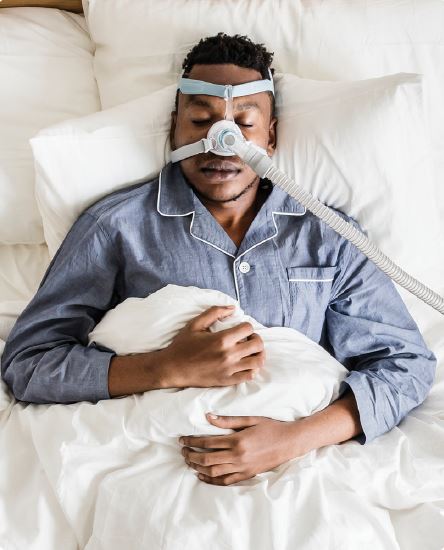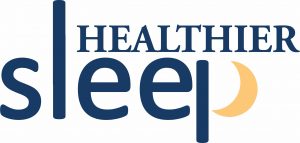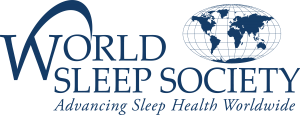What everyone should know about this common sleep disorder.
Sleep apnea is a pervasive, potentially dangerous disorder that deserves wider public awareness and understanding. An estimated 80% of moderate to severe cases go undiagnosed, and this sleep disorder can wreak havoc on longevity and quality of life.
Thomas Penzel, PhD of Charité Interdisciplinary Center of Sleep Medicine in Berlin, defines sleep apnea as “respiratory cessations during sleep,” meaning breathing actually stops for 10 seconds or more. As a prominent sleep researcher, physician and author, Dr. Penzel points out that people are not consciously aware of these pauses, but they can happen hundreds of times a night leading to fragmented sleep.

PERSISTENT, UNEXPLAINED FATIGUE
If sleep apnea is present, a full night’s sleep is rarely restorative. Dr. Penzel says patients might see “no improvement, even when taking naps in the daytime.” Untreated sleep apnea can sap the energy and enjoyment from daily life through mood swings, daytime sleepiness and loss of libido.
DAILY DANGERS
Dr. Penzel warns drowsiness can lead to work and traffic accidents, poor job performance and cardiovascular complications. Unchecked, sleep apnea can lead to diabetes, obesity and depression.
HEART DISEASE
Dr. Penzel has investigated the cardiovascular risks associated with untreated sleep apnea. He cites high blood pressure, the potential for stroke and even myocardial infarction (heart attack) as compelling reasons to take sleep apnea seriously. Long term, overlooked sleep apnea can cause premature death.
UNDERSTANDING APNEA TYPES
The most common, Obstructive Sleep Apnea (OSA) occurs when structures in the mouth or throat—such as the tongue or tonsils—relax during sleep and block the airway. In other words, something is physically in the way of breathing. Less commonly, Central Sleep Apnea (CSA) happens when the brain sends insufficient breathing signals to the body. Simply put, this type originates in the brain, rather than the airway.
SEVERITY
While apnea means “stop breathing,” hypopnea means “reduction in airflow.” Doctors analyze patient data into an Apnea Hypopnea Index (AHI). A patient’s AHI is the number of events (apnea or hypopnea) per hour of sleep.
Adult AHI Ranges
• Mild: AHI between 5-15 events per hour
• Moderate: AHI between 15-30 events per hour
• Severe: AHI greater than 30 events per hour
RISK FACTORS
While anyone can develop sleep apnea, certain risk factors can increase your odds:
• Obesity or being overweight
• Family history of OSA or snoring
• More common in men over 40
TALK TO YOUR DOCTOR
If you have concerning symptoms, Dr. Penzel recommends beginning with your primary care physician. If they suspect you might have sleep apnea, they will likely refer you to a sleep specialist, cardiologist or pulmonologist who will determine the necessary tests.
DIAGNOSIS FROM HOME
Dr. Penzel says many patients are able to receive an accurate diagnosis through a home sleep study. Their doctor outfits them with “a device recording respiration, oxygen saturation, snoring, and heartbeat.” When the study is complete, the patient returns the equipment, and the doctors analyze the data.
POLYSOMNOGRAPHY
Sometimes, physicians need more information. Patients may need Polysomnography, which is a sleep study conducted in a lab. In addition to monitoring the heart, movement and breathing, brain waves are recorded through electrodes attached to the scalp.
TREATMENT
Dr. Penzel finds Continuous Positive Airway Pressure (CPAP) helps most patients with OSA, while others obtain results with a Mandibular Advancement Device (MAD), which looks like a mouth guard and moves the jaw forward, keeping tongue away from the airway.
The best therapy for sleep apnea will depend on the patient, type and severity of apnea, and what might be its cause. From lifestyle changes to surgery, doctors have a variety of options at their disposal. The only way to get treatment for sleep apnea is to talk to your doctor, but the solution might be easier than you think. Don’t ignore symptoms, such as drowsiness, fatigue, headaches, irritability, high blood pressure or weight gain.

What is CPAP?
Dr. Thomas Penzel says many patients benefit from a Continuous Positive Airway Pressure (CPAP) device. Most CPAP machines are small (about the size of a bulky alarm clock) and portable. They are surprisingly quiet. A mask worn over the nose and/or mouth is attached by a flexible tube and delivers a steady pressure of warm, humid air.
What if I snore?
Snoring is not a reliable indicator for apnea in adults. While many patients with apnea do snore, many others do not. And just because you snore, that doesn’t mean you have sleep apnea either.
What about my weight?
Sleep apnea and weight gain often go hand and hand, but it can be difficult to determine causation or correlation in a particular individual. The repeated stopping and starting of breathing during sleep raises blood sugar and stress hormones, which can lead to weight gain. Being tired can make exercise a challenge. Additionally, excess fat in the neck and throat can collapse a relaxed airway.
Risk of Sleep Apnea Quiz
I am over age 40
Yes | NoI snore
Yes | NoI am overweight
Yes | NoI often awake with a morning headache.
Yes | NoI have woken up gasping or choking in the night.
Yes | NoI have been told I stop breathing at night.
Yes | NoI often awake feeling tired and unrefreshed.
Yes | NoI take naps to try and refresh my daytime sleepiness.
Yes | NoI have depression and/or diabetes.
Yes | NoI awaken with a dry and/or uncomfortable throat.
Yes | NoIf you answered ‘Yes’ to four or more of these questions, you are at risk of living with sleep apnea. The next step toward healthy sleep is to contact your primary care physician to talk about your concerns.
References
“Sleep Apnea Information for Clinicians – Sleep Apnea.” https://www.sleepapnea.org/learn/sleep-apnea-information-clinicians/. Accessed 24 Oct. 2020.
“Prof. Dr. Thomas Penzel: Interdisciplinary Center of Sleep ….” https://schlafmedizin.charite.de/en/metas/person_detail/person/address_detail/penzel/. Accessed 24 Oct. 2020.
“Obstructive sleep apnea – Symptoms and causes – Mayo Clinic.” 5 Jun. 2019, https://www.mayoclinic.org/diseases-conditions/obstructive-sleep-apnea/symptoms-causes/syc-20352090. Accessed 24 Oct. 2020.
“Central sleep apnea – Symptoms and causes – Mayo Clinic.” 25 Jun. 2019, https://www.mayoclinic.org/diseases-conditions/central-sleep-apnea/symptoms-causes/syc-20352109. Accessed 24 Oct. 2020.
“The Dangers of Uncontrolled Sleep Apnea | Johns Hopkins ….” https://www.hopkinsmedicine.org/health/wellness-and-prevention/the-dangers-of-uncontrolled-sleep-apnea. Accessed 24 Oct. 2020.
“Polysomnography (sleep study) – Mayo Clinic.” 17 Nov. 2018, https://www.mayoclinic.org/tests-procedures/polysomnography/about/pac-20394877. Accessed 24 Oct. 2020.



